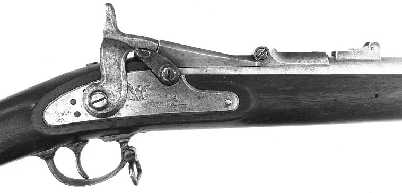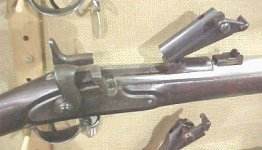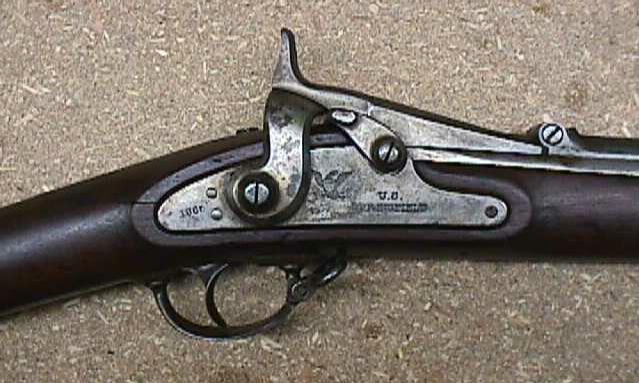  |
|
The rifles were made by sleeving CW musket barrels to .50 caliber and cutting open the top of the breech for the hinged breech block. The barrel is finished in the bright, and the blackened breech block is dated "1866." The arm is equipped with a musket rear sight and a CW stock which was internally altered to accept the extractor and ejector mechanisms. The arm had a weak extractor mechanism and was not popular with troops. However, it is best known for its performance in the Hay Field and Wagon Box fights that occurred with Sioux and Cheyenne Indians in 1867. 
|
|
|
|




